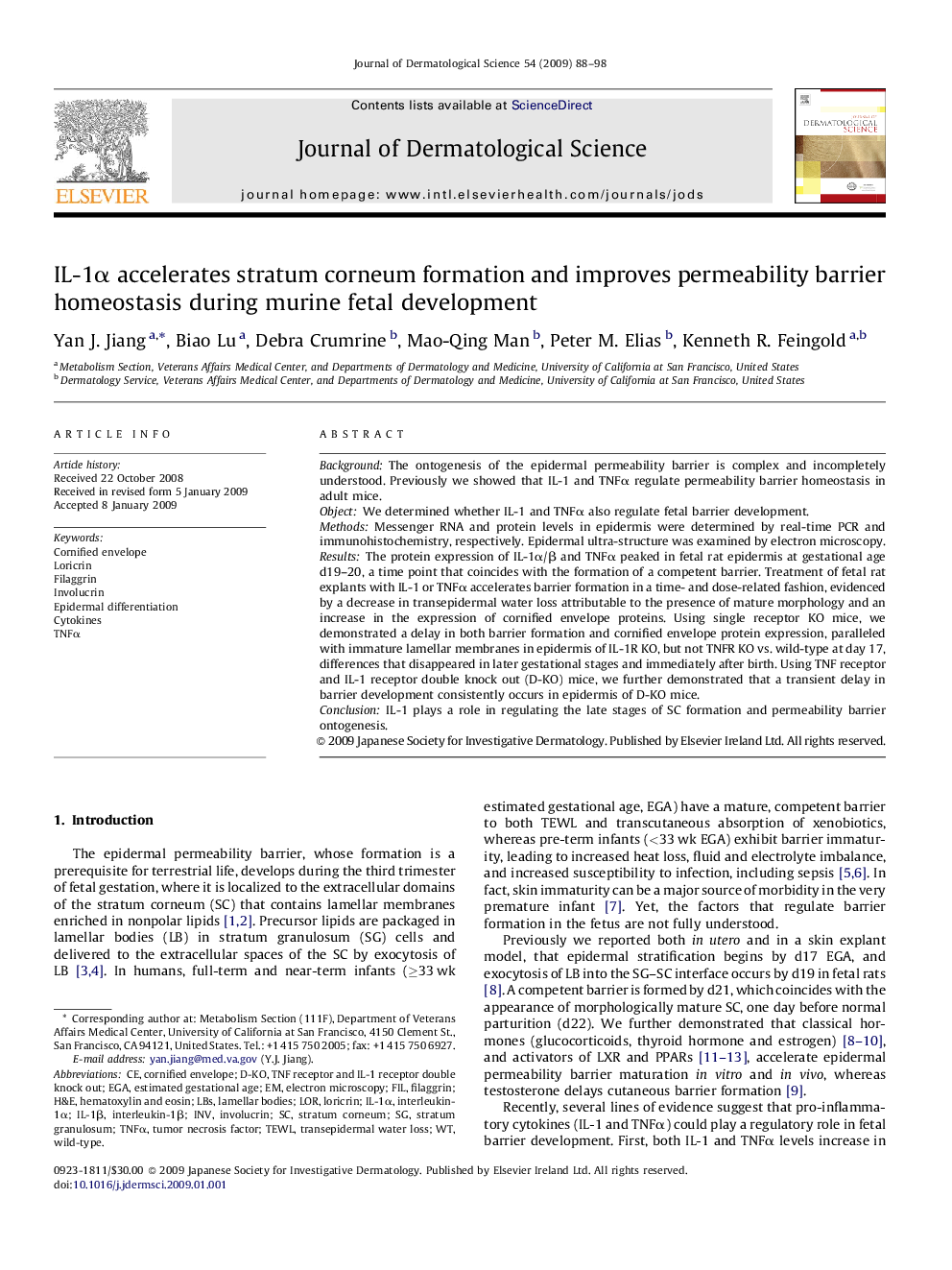| Article ID | Journal | Published Year | Pages | File Type |
|---|---|---|---|---|
| 3214073 | Journal of Dermatological Science | 2009 | 11 Pages |
BackgroundThe ontogenesis of the epidermal permeability barrier is complex and incompletely understood. Previously we showed that IL-1 and TNFα regulate permeability barrier homeostasis in adult mice.ObjectWe determined whether IL-1 and TNFα also regulate fetal barrier development.MethodsMessenger RNA and protein levels in epidermis were determined by real-time PCR and immunohistochemistry, respectively. Epidermal ultra-structure was examined by electron microscopy.ResultsThe protein expression of IL-1α/β and TNFα peaked in fetal rat epidermis at gestational age d19–20, a time point that coincides with the formation of a competent barrier. Treatment of fetal rat explants with IL-1 or TNFα accelerates barrier formation in a time- and dose-related fashion, evidenced by a decrease in transepidermal water loss attributable to the presence of mature morphology and an increase in the expression of cornified envelope proteins. Using single receptor KO mice, we demonstrated a delay in both barrier formation and cornified envelope protein expression, paralleled with immature lamellar membranes in epidermis of IL-1R KO, but not TNFR KO vs. wild-type at day 17, differences that disappeared in later gestational stages and immediately after birth. Using TNF receptor and IL-1 receptor double knock out (D-KO) mice, we further demonstrated that a transient delay in barrier development consistently occurs in epidermis of D-KO mice.ConclusionIL-1 plays a role in regulating the late stages of SC formation and permeability barrier ontogenesis.
